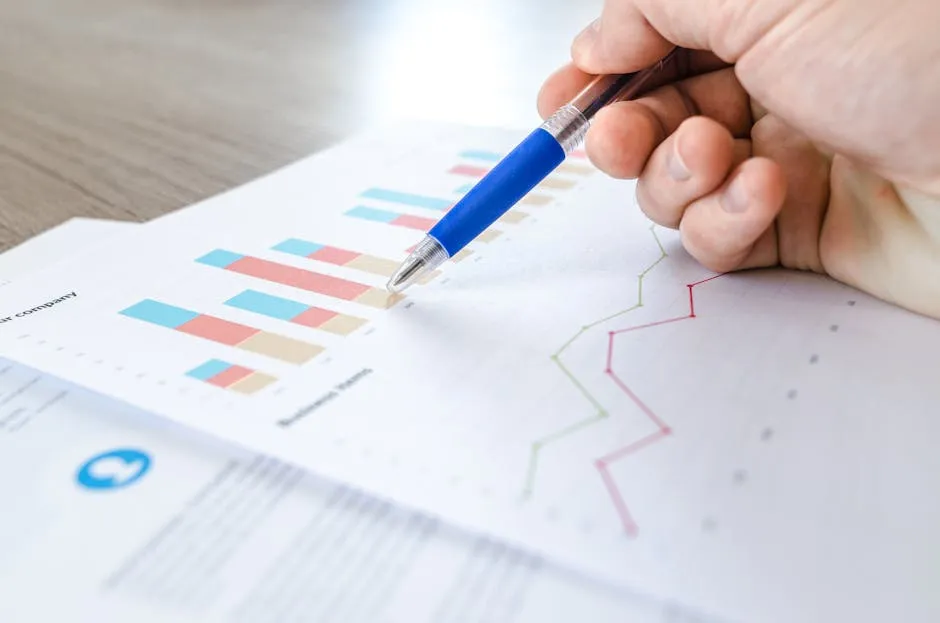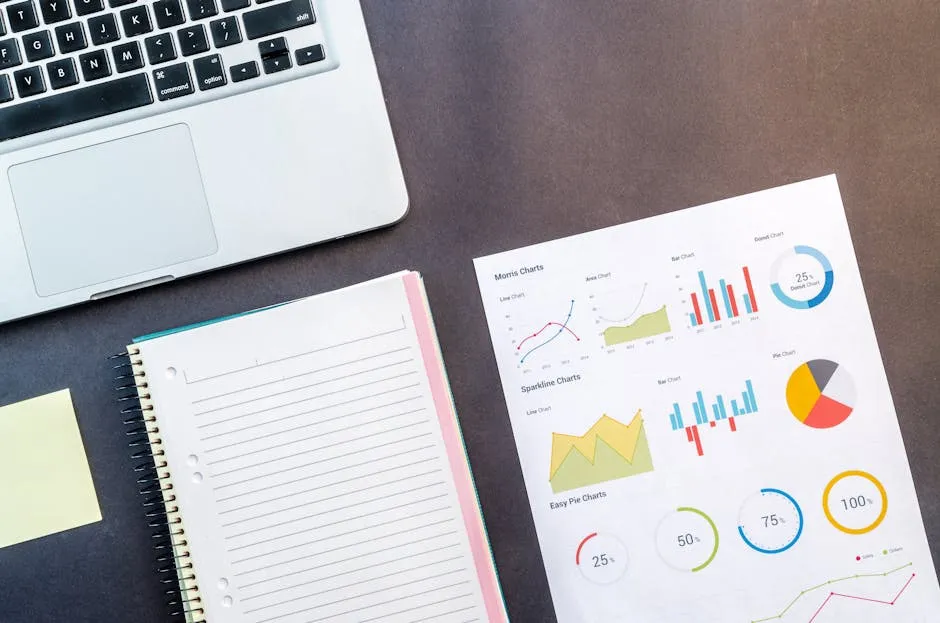Introduction
Statistics is like the Swiss Army knife of science. It’s versatile, essential, and often overlooked until you need it. This field of study plays a pivotal role across various domains. Whether you’re analyzing trends in business, studying patient outcomes in healthcare, or understanding societal behaviors in social sciences, statistics provides the backbone for informed decision-making. If you want to delve deeper into the world of statistics, consider picking up “The Art of Statistics: Learning from Data” by David Spiegelhalter.
So, what exactly is statistics? Simply put, it’s the science of collecting, organizing, summarizing, analyzing, and drawing conclusions from data. In an age dominated by information, the ability to interpret data accurately is crucial. Without statistics, we’d be sailing blind in a sea of numbers, like a ship without a compass.
Throughout this article, we’ll uncover the methodologies that underpin statistical studies. We’ll examine how data is collected, organized, and interpreted. You’ll discover various applications of statistics in everyday life and across professional fields. By the end, you’ll appreciate not just the importance of statistics, but also the fascinating world of numbers and what they reveal about our lives.

The Basics of Statistics
What is Statistics?
Statistics is a systematic approach to understanding data. At its core, statistics involves several key processes: collecting data, organizing it, summarizing it, analyzing it, and ultimately drawing conclusions. This process transforms raw data into meaningful insights.
When conducting studies, researchers start by gathering data. This could involve surveys, experiments, or observational studies. Once the data is collected, it must be organized in a way that makes sense. Think of it like cleaning your room: you can’t find anything if everything is in chaos. Organizing data helps identify patterns and trends.
Next, researchers summarize the data. This often involves calculating averages or creating visual representations like charts or graphs. These summaries provide a snapshot of the data, making it easier to digest. Imagine trying to read a 300-page novel without a summary—it would be daunting!
Analysis follows summarization. Here, researchers apply various statistical methods to interpret the data. This could include tests for significance or modeling relationships between variables. It’s like solving a puzzle, where each piece contributes to the bigger picture. To help with data analysis, consider using a Statistical Software Package that can streamline this process.
Finally, researchers draw conclusions based on their analysis. These conclusions can inform decisions, guide policy, and influence practices across many fields. Whether it’s determining the effectiveness of a new medication or predicting consumer behavior, statistics is the tool that helps us make sense of the world around us.
In essence, the discipline of statistics is more than just crunching numbers. It’s about transforming data into knowledge that drives decision-making, shapes policies, and enhances our understanding of various phenomena.

Key Terminologies in Statistics
Understanding statistics starts with grasping some fundamental concepts. Let’s break down a few key terminologies that form the backbone of this fascinating field.
Variable
A variable is a characteristic that can take on different values. Think of it as a box that can hold various items. For instance, “age” can vary from person to person, or “income” can differ among households. Variables are essential because they help us describe and analyze data.
There are two main types of variables:
- Qualitative Variables: These are categorical and can be divided into distinct groups. Examples include gender, color preference, or types of cuisine.
- Quantitative Variables: These are numerical and can be measured. They can be further classified into:
- Discrete Variables: Countable values, like the number of pets you own.
- Continuous Variables: These can take any value within a range, such as height or temperature.
Data
Data is the lifeblood of statistics. It refers to the values or observations collected during research. Data can be classified into two primary types:
- Qualitative Data: This type involves non-numerical information, like names or labels. For example, survey responses like “satisfied” or “dissatisfied” fall into this category.
- Quantitative Data: This type includes numerical values that can be measured. Examples are test scores, heights, or temperatures.
Data is significant because it allows researchers to draw conclusions and make informed decisions. The more accurate and comprehensive the data, the more reliable the conclusions. If you’re interested in keeping your data organized, consider using a Notebook for data collection and note-taking.

Population vs. Sample
Understanding the difference between a population and a sample is crucial in statistics.
- Population: This term refers to the entire group of individuals or items that are the subject of a study. For instance, if you’re studying the voting behavior of Americans, the population includes all eligible voters in the U.S. Learn more about population of interest statistics.
- Sample: A sample is a subset of the population selected for analysis. It’s often impractical or impossible to study the entire population, so researchers select a sample that represents the population. For example, if you survey 1,000 voters to understand voting trends, that group is your sample. Find out why a sample statistic will not change from sample to sample.
Using samples allows researchers to make inferences about the larger population without needing to analyze everyone. However, it’s crucial that samples are chosen carefully to avoid biases.
In summary, understanding variables, data, and the distinction between population and sample is essential for anyone diving into the world of statistics. These concepts form the foundation upon which statistical analyses are built, enabling researchers to uncover insights from the mountains of data available today.

Inferential Statistics
Inferential statistics is the magic wand of data analysis. It helps us make predictions or generalizations about a population based on a sample. Think of it as the detective work of statistics—drawing conclusions from limited evidence. Explore the problem with inferential statistics.
Applications of inferential statistics are vast. Researchers use it to determine relationships between variables and test hypotheses. For instance, if a company wants to know how a new product will perform, they might survey a small group of customers. The insights gleaned can forecast broader market trends.
Sampling methods play a crucial role in inferential statistics. Random sampling ensures that every individual has an equal chance of being selected. This method minimizes bias and increases the reliability of results. Another method is stratified sampling, where the population is divided into subgroups. Samples are then drawn from these strata. This approach ensures representation across different segments of the population.
Hypothesis testing is a cornerstone of inferential statistics. It involves making an assumption (the hypothesis) and then determining whether the data supports it. For example, suppose a coffee shop claims that their new brew increases customer satisfaction. Researchers could conduct a study comparing satisfaction levels before and after the introduction of the new coffee. By analyzing the sample data, they can ascertain whether the change is statistically significant.
Consider this real-world example: a political pollster surveys 1,000 voters to predict the outcome of an upcoming election. Based on the sample, they might predict that a certain candidate will win. This prediction is not a guarantee but an educated guess, backed by statistical principles.
In summary, inferential statistics empowers us to make informed decisions. It transforms sample data into predictions about a larger population, making it a valuable tool in various fields.

Data Collection Methods
Surveys and Questionnaires
Surveys are powerful tools for gathering data. They can be designed to capture information from a large audience efficiently. The process starts with crafting questions that are clear and relevant. A well-structured survey can yield insightful data, while poorly worded questions can lead to confusion and unreliable results.
When designing surveys, the phrasing of questions is critical. Ambiguity can skew results. For instance, asking, “How satisfied are you with our service?” may produce varied interpretations. Instead, consider using structured responses, such as a Likert scale, ranging from “very dissatisfied” to “very satisfied.” This approach not only clarifies expectations but also allows for easier data analysis.
The structure of surveys also plays a significant role. A good survey typically starts with simple questions, gradually moving to more complex ones. This strategy helps to ease respondents into the survey. Engaging questions can encourage completion, while overly technical jargon can deter participation.
To enhance your data collection efforts, consider using a Graphing Calculator to streamline calculations and visualizations.

Experiments
Experimental studies are the gold standard in statistics. They involve manipulating one or more variables to observe the effects on another variable. This method allows researchers to establish cause-and-effect relationships. For example, a pharmaceutical company might test a new drug by comparing its effects against a placebo. Discover the two essential features of all statistically designed experiments.
Observational studies, on the other hand, do not involve manipulation. Researchers simply observe and record data without interference. For instance, studying the behavior of students in a classroom setting is observational. While observational studies can provide valuable insights, they often lack the rigor of experimental designs.
To illustrate, imagine a study examining the impact of study habits on test scores. An experimental approach would involve two groups: one group follows a new study method, while the other continues with their usual habits. In contrast, an observational study might simply analyze existing data on students’ study habits and test scores without any intervention.
In conclusion, both surveys and experiments are essential data collection methods in statistics. Surveys allow for broad data collection, while experimental studies provide the rigor needed to draw causal conclusions. Each method has its strengths, making them invaluable tools in the statistician’s toolbox.

Sampling Techniques
Sampling techniques are the backbone of any statistical study. They help researchers gather meaningful insights without the need to analyze entire populations. Let’s break down the most common methods for sampling.
Random Sampling is the gold standard. In this method, every individual in the population has an equal chance of being selected. Picture a lottery: everyone has a fair shot at winning. This technique minimizes bias and ensures that the sample reflects the diversity of the population.
Next, we have Stratified Sampling. Here, the population is divided into subgroups or strata based on shared characteristics, like age or income. Researchers then randomly select samples from each stratum. This method ensures that all segments of the population are represented. Think of it as a buffet: you want a little bit of everything on your plate!
Systematic Sampling offers another approach. In this method, researchers select every nth individual from a list. For example, if you’re surveying every 10th person on a list of customer emails, you’re using systematic sampling. It’s straightforward but requires a well-ordered list to avoid bias.
Lastly, let’s discuss Cluster Sampling. In this method, researchers divide the population into clusters (like neighborhoods) and randomly select entire clusters for study. It’s often used when populations are spread out geographically. Imagine a pie: instead of sampling individual slices, you cut out whole pieces and sample them. Read more about cluster sampling statistics.
Choosing the right sampling method is crucial. A representative sample captures the essence of the population, ensuring that the findings are valid and generalizable. If the sample is biased, it’s like trying to judge a book by only reading the first page—it simply won’t work.

Analyzing Data
Data Organization
Data organization is a critical step in making sense of the numbers. Think of it as tidying up your room before inviting friends over. You can’t enjoy a party in chaos, right? Similarly, organized data makes analysis more manageable.
One effective technique is using tables. Tables present data in a structured format, allowing researchers to quickly identify patterns and relationships. For example, a table displaying monthly sales figures can reveal trends over time.
Charts and graphs are also essential tools. They visually represent data, making it digestible at a glance. Bar graphs can compare quantities, while line graphs show changes over time. Imagine trying to explain your vacation photos without visuals—much harder, isn’t it?
Pie charts are great for illustrating proportions. They help visualize how different categories contribute to a whole. If you want to show how much of your budget goes to food, entertainment, or rent, a pie chart is your best friend.
Data visualization is paramount for interpretation. When data is visually appealing, it captures attention and enhances understanding. A well-crafted graph can tell a story that mere numbers cannot. It’s like having a great opening line in a novel—if it hooks you, you’re more likely to keep reading!

Statistical Analysis Techniques
Now, let’s get into the nitty-gritty: statistical analysis techniques. These methods help researchers interpret data and draw meaningful conclusions.
One common method is the t-test. This technique compares the means of two groups to see if they are significantly different. For instance, if a teacher wants to know whether a new teaching method improves test scores, a t-test can help determine if the observed difference is statistically significant.
ANOVA, or Analysis of Variance, takes it a step further. It compares the means of three or more groups. Imagine a cooking competition with multiple chefs. ANOVA helps determine if one chef’s dish stands out from the others. It’s perfect for studies involving multiple treatments or conditions.
Regression analysis is another powerful tool. It examines the relationship between variables. For example, a researcher might use regression to understand how study hours impact test scores. By analyzing the data, they can predict test outcomes based on different study habits. It’s like having a crystal ball for academic performance!
When choosing a statistical method, context is key. Each technique serves a specific purpose. Understanding when to use which method is crucial for valid results. After all, using a hammer for a screw won’t get you far!
In summary, data organization and statistical analysis are vital to interpreting research results. By employing the right techniques, researchers can transform raw data into actionable insights. It’s like turning lead into gold!

Applications of Statistics
Statistics is not just about numbers; it’s a powerful tool that shapes various fields. Let’s look at how statistics is applied in business, healthcare, and social sciences.
Statistics in Business
Businesses love statistics almost as much as they love free coffee! Statistics plays a crucial role in market research. Companies analyze consumer behavior to understand what products will fly off the shelves. They gather data through surveys and focus groups, then crunch those numbers to identify trends and preferences.
Sales forecasting is another area where statistics shines. By examining past sales data, businesses can predict future sales trends. This helps them manage inventory levels and allocate resources effectively. Imagine a bakery predicting how many loaves of bread they’ll need for the weekend rush. Thanks to statistics, they can bake just the right amount, avoiding both waste and disappointed customers.
Quality control is yet another application. Think of it as the business version of a reality check. Companies use statistical process control to monitor production processes and ensure quality standards are met. By analyzing data on defects or errors, they can identify issues before they escalate. This proactive approach enhances customer satisfaction and boosts brand reputation. For a comprehensive understanding of this aspect, check out “Statistics for Dummies” by Deborah J. Rumsey.

Statistics in Healthcare
In healthcare, statistics is like the secret ingredient in a successful recipe for medical advancement. It plays a vital role in medical research. Researchers use statistics to determine the effectiveness of new treatments and medications. For instance, clinical trials rely heavily on statistical methods to analyze patient outcomes and side effects. This way, they ensure that a new drug is safe and effective before it hits the market.
Statistics is also crucial in public health. Public health officials use statistical data to track disease outbreaks, monitor vaccination rates, and assess health risks in populations. By analyzing data from health surveys, they can identify trends and respond effectively to health crises. For example, during a flu outbreak, officials can use statistics to determine which demographics are most affected and tailor their prevention strategies accordingly.

Statistics in Social Sciences
Social sciences are where statistics meets humanity, and it’s a fascinating dance. Social scientists use statistics to study behavior, societal trends, and issues. They analyze survey data to understand public opinion, such as attitudes toward climate change or social justice. By applying statistical techniques, they can draw meaningful conclusions from complex data sets.
For instance, researchers examining the effects of social media on mental health use statistics to identify correlations between screen time and well-being. They might analyze survey data from thousands of respondents to determine if excessive social media use leads to increased anxiety or depression.
Statistics also helps in evaluating policies and programs. By analyzing data from before and after a program is implemented, social scientists can assess its impact. This evidence-based approach ensures that decisions are grounded in data, leading to better outcomes for society. If you’re looking for a deeper dive into data analysis, consider “Data Science for Business” by Foster Provost.

Challenges in Statistics
While statistics is a powerful tool, it comes with its fair share of challenges. Let’s dive into two significant issues: misinterpretation of data and ethical considerations.
Misinterpretation of Data
Ah, the classic game of telephone—only with numbers! Misinterpretation of data is a common pitfall in statistics. Often, people extract information from data without understanding the context or methodology used to collect it. This can lead to skewed conclusions.
For example, a study might find that people who drink coffee tend to be more productive. However, without considering other factors, such as sleep habits or overall lifestyle, one might mistakenly conclude that coffee is the magic productivity potion.
Critical thinking is essential when interpreting statistical data. It’s important to ask questions like: What was the sample size? Was it random? Are there confounding variables? By examining these details, one can avoid the trap of misinterpretation and draw more accurate conclusions.

Ethical Considerations
Ethics in statistics is like the cherry on top of a well-constructed sundae. Researchers must adhere to ethical standards when conducting studies and reporting results. Data manipulation and reporting biases are serious concerns.
For instance, if researchers selectively report only favorable outcomes of a study, they mislead the public and the scientific community. This not only tarnishes the reputation of the researchers but can also have real-world consequences, such as the adoption of ineffective interventions.
Transparency is key in statistical research. Researchers should disclose their methodologies, share raw data, and be honest about limitations. This fosters trust and ensures that findings can be verified and built upon by others. If you want to ensure your research is thorough, consider investing in a statistical analysis textbook to guide your work.

Conclusion
Statistics is more than just a collection of numbers; it’s a vital science that helps us make sense of the world. From guiding business decisions to improving public health and understanding societal trends, the applications of statistics are vast and impactful.
As we’ve seen, its role in various fields underscores its importance in decision-making processes. Understanding statistics enhances our ability to interpret data critically and appreciate its relevance in our daily lives. So, the next time you see a statistic, remember that behind those numbers lies a wealth of knowledge waiting to be uncovered. If you want to boost your understanding further, I recommend checking out “Statistics: A Very Short Introduction” by David Freedman.
FAQs
What are the key differences between descriptive and inferential statistics?
Descriptive statistics summarize data, providing an overview through measures like mean and median. For instance, census data reflects demographic trends. Inferential statistics, on the other hand, allow us to make predictions about a population based on sample data. For example, using a poll to forecast an election outcome leverages inferential methods.
How can I get started with learning statistics?
Ready to dive into the world of statistics? Start with foundational books like “Naked Statistics” by Charles Wheelan or “Statistics for Dummies.” Online platforms like Khan Academy and Coursera offer fantastic courses. YouTube also has great tutorials for visual learners, so there’s no excuse not to get started!
What are some common misconceptions about statistics?
Statistics often gets a bad rap. One common misconception is that correlation implies causation. Just because two variables are related doesn’t mean one causes the other. Another myth is that statistics can prove something definitively. In reality, they can only provide evidence to support or refute a hypothesis.
Why is sampling important in statistics?
Sampling allows researchers to make inferences about a larger population without overwhelming data collection. A well-chosen sample can provide insights that are representative of the whole. It saves time and resources while still yielding reliable results.
How can statistics be applied in everyday life?
Statistics is everywhere! From budgeting and planning your expenses to analyzing trends in your favorite sports team’s performance, stats are your allies. Even simple tasks like tracking your workout progress or interpreting poll results during elections involve statistics. Embrace it, and make data-driven decisions in your daily life!
Please let us know what you think about our content by leaving a comment down below!
Thank you for reading till here 🙂
All images from Pexels




